Playwrights in 17th century Spain and England
England:
Christopher Marlowe (1564-1593) Drawing on Seneca's tragedy and its passionate structure and language Marlowe pioneered blank verse plays in English with his Jew of Malta and Doctor Faustus. However he was killed before his creative powers could be fully developed. A curious feature of his work is its political character and seeming amoralism.
Drawing on Seneca's tragedy and its passionate structure and language Marlowe pioneered blank verse plays in English with his Jew of Malta and Doctor Faustus. However he was killed before his creative powers could be fully developed. A curious feature of his work is its political character and seeming amoralism.
William Shakespeare (1564-1616) Not much left to be said really. Starting with his Historical Plays this man is insane. Read Richard II for one. He really gives you the atmosphere and feeling of divine kingship as almost a sacramental office. But also shows how it can be abused and kings deposed. Also plays he composed at the the beginning of the 17th century like Macbeth and Hamlet are truly frightening in that they reveal Modern man to himself as he was just developing.
Not much left to be said really. Starting with his Historical Plays this man is insane. Read Richard II for one. He really gives you the atmosphere and feeling of divine kingship as almost a sacramental office. But also shows how it can be abused and kings deposed. Also plays he composed at the the beginning of the 17th century like Macbeth and Hamlet are truly frightening in that they reveal Modern man to himself as he was just developing.
Ben Jonson 1572-1637 The only other Elizabethan dramatist besides Webster Jonson's the only one I'd read. In general he is the best Satirical Dramatist of the period. Epicoene- The Silent Woman and The Alchemist are a must. He often features street slang in his plays which might addle your comprehension if you are used to Shakespeare.
The only other Elizabethan dramatist besides Webster Jonson's the only one I'd read. In general he is the best Satirical Dramatist of the period. Epicoene- The Silent Woman and The Alchemist are a must. He often features street slang in his plays which might addle your comprehension if you are used to Shakespeare.
Spain:
Lope de Vega 1562-1635 "El monstruo de la naturaleza"- The monster of nature.
"El monstruo de la naturaleza"- The monster of nature.
Cervantes' great rival and the spir that produced Don Quijote Lope wrote nearly five hundred or so plays (some say a thousand) he wrote in a fluid lyrical style, never erasing what he wrote but instead scratching his mistakes out so only he could make out his originals. He single handedly invented the Golden Age Spanish genre which consisted of rhymed verses including Romances, Silvas, Sonnets, Octavas- a mixture of Italian and Spanish verse forms. Such plays consisted of three acts and did away with the classical unities of time and place in favor of a more episodic structure.
What follows are a list of the major playwrights of Lope's school:
Tirso de Molina 1579-1648 Strangely, Gabriel Téllez a Mercedarian priest wrote plays under the name of Tirso de Molina.
Strangely, Gabriel Téllez a Mercedarian priest wrote plays under the name of Tirso de Molina.
The first Don Juan play is attributed to him but is probably not his. He is remarkable for his strong and memorable female characters. My favorite work of his is Gon Gil de las calzas verdes where a woman wronged by her fiancee disguises herself as a man with green stockings calling herself Gil, a kind of hick name. This is significant in that Don Gil with Green Stockings was a topical figure representing a ghost from purgatory walking on earth. And as the intrigue get more complicated other characters start to impersonate the very woman who is impersonating a man. All very entertaining.
Juan Ruiz de Alarcón 1581-1639
This is one of the first writers of the New World to make it in Europe. He was born in Mexico and went to study Law at Salamanca in Spain. While there for a space of twenty years he wrote plays that were distinct in their psychological realism. His place our different and betray his Mexicanness strange as that seems since he was 100% Spanish blooded. In terms of today one would say it was his Americanness that set him apart.
He was hunch-backed and slightly deformed which gave rise to numerous jibes from other poets. However his grand plays such as Las paredes oyen, El tejedor de Segovia, and La Verdad Sospechosa were influential to later French playwrights such as Corneille and Moliere. His La verdad sospechosa- features Garcia who is an inveterate and compulsive lier. The stories he tells are so compelling that they seem more real than the actual truth. A scary prospect. One would say nowadays that he is a bit of a socio-pathic bullshitter. In effect, his plays are distinct in that they are the first of what will be called Comedies of Manners. Underlying it all is his particular moralistic vision of human relations, a common American trait.
Luis Vélez de Guevara 1579-1644- "el ingenio de Écija"
It's a shame they don't have a picture of this playwright. He was unique. His Reinar después de morir is one of the better tragedies of Spanish theatre which centers on Prince Pedro of Portugal and Ines his betrothed who is father wants him to cast of in favor of Blanca from Castile. He also wrote a great fantastic work of fiction El diablo cojuelo about a university student running from the police after taking advantage of a certain young lady. He ends up on the rooftops and happens upon a scorcers' attic which has a little bottle with a devilish imp inside it. The limping devil was the first angel to rebel and so fell to earth first with the rest of the evil angels falling on top of him. He also boasts of introducing most of the lascivious dances then current in Spain. He gives the student a tour of Golden Age Madrid with all the ensuing picaresque types. The prose is magnificent and as far as I can tell untranslatable.
Calderón de la Barca 1600-1680 After Lope, Calderón contributed the most to the style of Golden Age drama. He takes Lope's basic formula and heightens the dramatic tension. He also uses more cultured poetry in the new style pioneered by Góngora which strives for more Baroque artifice. He excelled in moral dilemnas and the Auto Sacramental- the Spanish equivalent of the Miracle Play. He is a moster semioticians his use of symbols harkening to 20th century experimental theatre. One must think of his Miracle Plays as more of a theatre of the abstract than a mere repetition of the Medieval genre. Also he was the longest lived and the Spanish Golden Age is mostly said to stop with his death. His best straight plays are Life is a dream, La hija del aire, La dama duende, El alcalde de Zalamea. Many of his contemporaries also fall into the Calderonian school with their use of heightened emotion and artifice in language:
After Lope, Calderón contributed the most to the style of Golden Age drama. He takes Lope's basic formula and heightens the dramatic tension. He also uses more cultured poetry in the new style pioneered by Góngora which strives for more Baroque artifice. He excelled in moral dilemnas and the Auto Sacramental- the Spanish equivalent of the Miracle Play. He is a moster semioticians his use of symbols harkening to 20th century experimental theatre. One must think of his Miracle Plays as more of a theatre of the abstract than a mere repetition of the Medieval genre. Also he was the longest lived and the Spanish Golden Age is mostly said to stop with his death. His best straight plays are Life is a dream, La hija del aire, La dama duende, El alcalde de Zalamea. Many of his contemporaries also fall into the Calderonian school with their use of heightened emotion and artifice in language:
Francisco Rojas Zorrilla 1607-1660
Again it is a shame that there is no portrait available online of this gallant and playwright. At one time he as a rival even to Calderon for the position of court playwright. His verse-form and plot structure are one of the best. He also had extensive influence on French playwrights like Corneille and Moliere.
Agustín Moreto 1618-1661
Moreto was very stylish and was a bit of a lindo a daddy at the time who cared more for his mustache than for other people. He parodied this attitude in El lindo Don Diego. Also his most famous piece Desden con desden is a precursor to Jane Austin's Pride and Prejudice. Mostly he reworked former playwrights plots and intrigues but to a great, polished, and courtly effect.

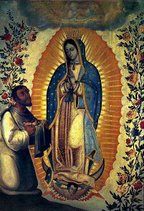
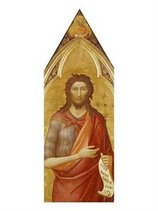
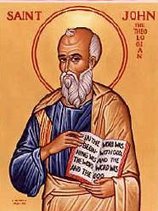

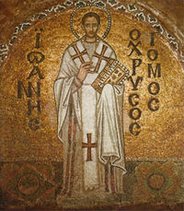
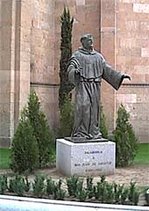

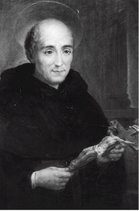
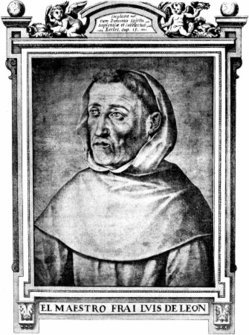
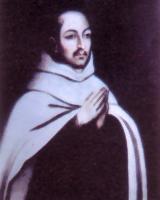


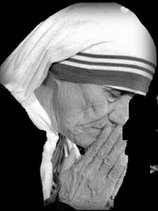

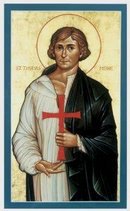
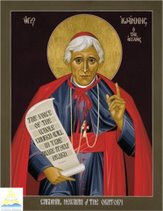




No comments:
Post a Comment